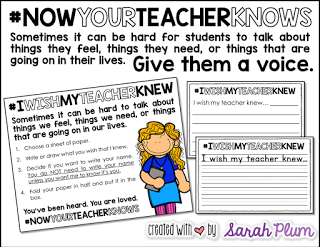I am so thrilled to be a part of GoNoodle’s Back to School Blogger Blitz! If you’ve read my blog or followed my Facebook fan page for any length of time, you know I have a deep, deep love for GoNoodle. I’ve guest-blogged for them before, and use it DAILY in my classroom. It’s simply put, my favorite instructional tool. {Make sure you read to the bottom of the post so that you can WIN, WIN, WIN!} Today I’m excited to share with you the three ways I use GoNoodle to build character in my students. Building character, to me, is the daily piece that makes all other instructional and non-instructional tasks easier. I cannot overemphasize the important of strong character in students and how it relates to classroom and school culture!
1. Visualizing Success
I want my students to have a “can-do” attitude, to see the positive in all situations, to persevere when the going gets tough. School, for many of my students, can often be a place that is daunting and where success sometimes feels far away. I want them to be able to weather those moments with confidence and ease — and I use GoNoodle’s “Think About It” feature to build that.
Before ANY graded assignment or test, we watch the “Try Your Best” video. My students close their eyes, take deep breaths, and repeat what’s written on their name tags. I’ve had students even request this video in the past when they’ve felt like they need that extra reminder to use their perseverance to their advantage — what an amazing testimony to how this reaches kids!
 2. Developing Positive Peer Relationships
2. Developing Positive Peer Relationships
I want my students to understand the importance of their classmates in their school life. I want my students to feel like they are a part of a classroom community, not just a classroom. I use the “Think About It” feature at times when there may be a teachable moment with peer interaction. The “Be a Good Friend,” “Be a Team Player,” and “Make Someone Happy” videos have really helped to refocus our energy on the positive.
“Think About It” feature at times when there may be a teachable moment with peer interaction. The “Be a Good Friend,” “Be a Team Player,” and “Make Someone Happy” videos have really helped to refocus our energy on the positive.
I follow that up with an energizing team-building video like Koo Koo Kanga Roo’s “Secret Handshakes” or some of the fantastic newer “Brainercise with Mr. Catman” that require coordination between partners. This allows students to directly relate to their peers following a moment of mindful reflection on being a positive force in our classroom.
 3. Being Disciplined
3. Being Disciplined
Becoming skilled at a whole-body task like yoga requires discipline. For any primary teacher, developing discipline — particularly self-discipline — is an on-going challenge. We also know that cross-body coordination is critical for brain development. I love to use Maximo’s yoga videos to develop discipline in my students.
We start small, with an easier video like “Hug it Out” to get the hang of the discipline required to stay quiet, centered, and breathing. Eventually we work up to more challenging videos like “Eagle Pretzel” or “Willow Willow.” The students love to challenge themselves, but also to have an opportunity to have a calming, reflective moment. I love participating with them because of the opportunity to center myself!
I hope you’ll consider using GoNoodle to expand your students’ character! I love using it for a variety of things, including plain ‘ol movement brain breaks, but I also love using it to enhance our classroom community.




















